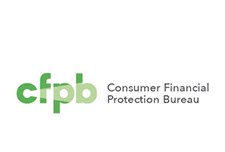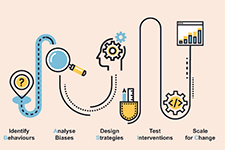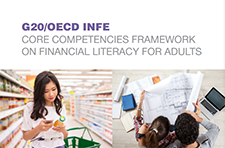Discover financial empowerment resources
Discover financial empowerment resources
When immigrants arrive in Canada, they face many financial challenges. From opening a bank account to using a credit card, from buying a house to paying for insurance, they may find it difficult to navigate the nuances of Canadian markets. Newcomers rely on industry professionals to assist them in...

The Consumer Finance Protection Bureau has developed resources to help multilingual communities and newcomers in a selection of languages. The translated financial terms are available in Chinese, Spanish, Vietnamese, Korean and Tagalog. This website has many other multi-lingual resources, covering...

This report discusses the interactions between finances and mental health, based on the experience of over 5000 individuals who have lived with mental health problems. Mental health problems leading to relationship difficulties, physical health problems, mental health treatments, cognitive...

A better understanding of human behaviour can lead to better policies. If you are looking for a more data-driven and nuanced approach to policy making, then you should consider what actually drives the decisions and behaviours of citizens rather than relying on assumptions of how they should...

Developed in response to a call from G20 Leaders in 2013, the core competencies frameworks on financial literacy highlight a range of financial literacy outcomes that may be considered to be universally relevant or important for the financial well-being in everyday life of adults and youth. These...

The Zambia Financial Diaries is a year-long panel study that collects data each week on all transactions performed by respondents - all sales and purchases, income earned from informal or formal labor, uses of financial tools, and exchanges of in-kind goods. The purpose of the study is to develop...
This paper presents new survey data on subjective mortality beliefs for nearly 5,000 respondents, administered by a professional survey panel provider, and it shows that these survey-elicited beliefs contribute to seemingly contradictory savings rate puzzles at opposite ends of the...
Comprehensive research on microfinance and subsidy shows that virtually all microfinance institutions are subsidized, but these subsidies are small. There are two clear paths for increasing microcredit’s impact through continued investment: » Lowering the cost of microcredit by lowering...
Spending responses to income are typically explained by households’ capital structures. Households that hold little or no liquid wealth have to consume hand-to-mouth. However, we find that few individuals hold little or no liquidity, and we document that liquidity holdings are much larger than...
The gap between rich and poor is reaching new extremes. Credit Suisse recently revealed that the richest 1% have now accumulated more wealth than the rest of the world put together.1 This occurred a year earlier than Oxfam’s much publicized prediction ahead of last year’s World Economic Forum....
This reports on research results from an experiment in Malawi that varied the timing of workers' income receipt in two ways. First, payments were made either in weekly installments or as a monthly lump sum, in order to vary the extent to which workers had to save up to make pro table investments....
The report’s primary aim was to analyze the existing microfinance industry in the United States from the point of view of its ability to scale up services to the underserved (the working poor) and its sustainability, i.e., its ability to operate such that MFIs cover all of their operating costs,...
This is the slide deck for the webinar presentation by the Cities of Migration project from the United Nations. This webinar presents research on refugrees and their reliance on technology as an aspect of improving well-being and access to humanitarian...
This is a 2005 brief from the OECD Directorate for Financial and Enterprise Affairs, on recommended principles of financial education. It offers a definition of financial educaiton, financial capacity building, and recommendations for financial education program content....
In the spirit of social justice, the Commission on Social Determinants of Health was set up by the World Health Organization (WHO) in 2005 to marshal the evidence on what can be done to promote health equity, and to foster a global movement to achieve it. The Commission calls on the WHO and all...
Financial literacy programs are fast becoming a key ingredient in financial policy reform worldwide. Yet, what is financial literacy exactly and what do we know of its effectiveness? This paper collects insights from the literature thus far and summarizes global evidence, on financial literacy, its...
These worksheets are to be used in conjunction with the ExpandNet/WHO document entitled Nine steps for developing a scaling-up strategy. For more extensive guidance on scaling up, see Practical guidance for scaling up health service innovations. These and other scaling up tools are available on the...
Calls for scaling up successfully tested health service innovations have multiplied over the past several years. Many acknowledge that pilot or experimental projects are of limited value unless they have larger policy and programme impact. Moreover, there is increasing recognition that prove...
This guide contains 12 recommendations on how to design pilot projects with scaling up in mind, as well as a checklist that provides a quick overview of the scalability of a project that is being planned, proposed, or in the process of implementation. Based on a combination of a comprehensive...
This report explores New Zealand’s ‘Bright Spots’ – local places and community initiatives that are making a positive difference to children and families. Instead of asking about the issues and problems for ‘vulnerable children’ or ‘high-needs families’, we ask ‘what’s...
Mobile payments (m-payments) are an important aspect of mobile banking, which is a form of retail financial services that is growing rapidly around the world. Canadian consumers are increasingly migrating away from branch-based banking towards online and mobile banking. Research suggests that the...
We experimentally test the impact of expanding access to basic bank accounts in Uganda, Malawi, and Chile. Over two years, 17%, 10%, and 3% of treatment individuals made five or more deposits, respectively. Average monthly deposits for them were at the 79th, 91st, and 96th percentiles of baseline...
The microfinance industry began with the intent to help poor clients help themselves. That’s one reason so many microfinance institutions have embraced the Smart Campaign, which strives to embed a set of client protection principles into the fabric of the microfinance sector. This synthesis...
BDSC firms are using varied forms of non-traditional data—from mobile call data records and bill payments to Internet browsing patterns and social media behaviour—to create a new way to assess consumer risk, determine the creditworthiness of previously “invisible” consumers, and...
This book is the first major study of financial education at the international level. It highlights the economic, demographic and policy changes that make financial education increasingly important, identifies and analyses financial literacy surveys in OECD countries, describes the different types...
